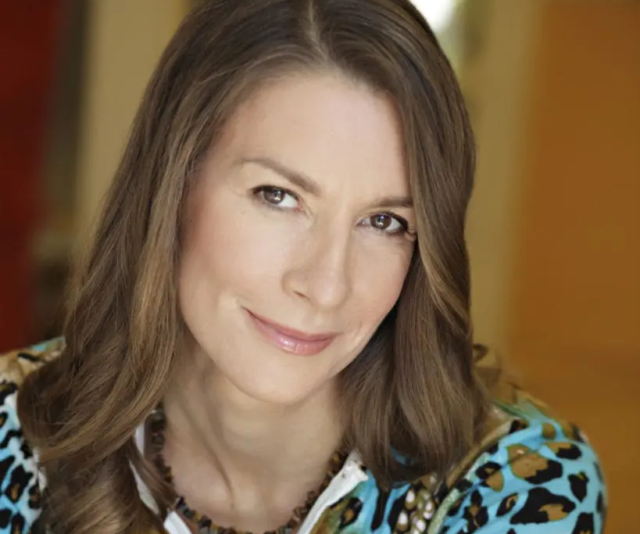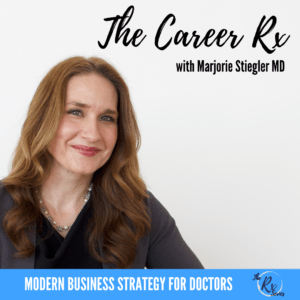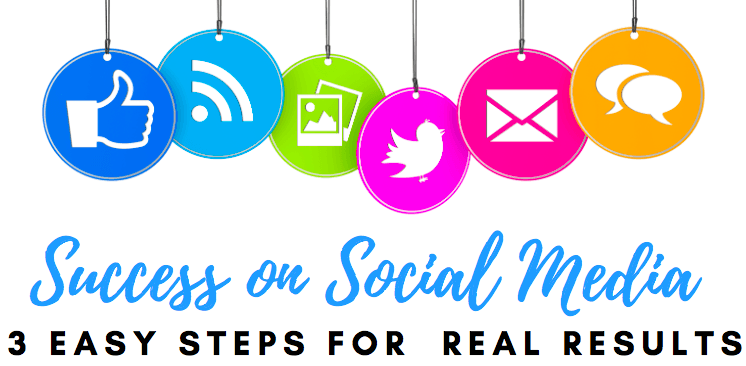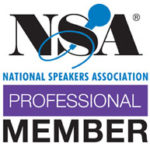Don’t take my word for it – the #1 most important thing to get right for any career pivot is your nonclinical resume and your LinkedIn profile. Dr. Heather Fork has been in the physician career transition business for more than 12 years, so she knows a thing or two.
In this episode of The Career Rx we’ll discuss:
- Strategies you can implement today to optimize your LinkedIn profile and resume
- Insights from a highly experienced physician career transition coach
- How to eliminate the guesswork from what to write, and where to put it
Today’s episode is a conversation with dermatologist-turned-career-transition-coach, Dr. Heather Fork. She has over 12 years of experience, and has created resources that aid in the most important early stages of career transitions. By the end of this episode, you’ll know some of the most common challenges physicians face when starting to convert a CV to a nonclinical resume, and setting up and optimizing a LinkedIn profile.
Special announcement: My course, Industry Insider, is now accredited for up to 12 CME credits. Learn how to land an exciting and impactful role as a physician in the world of pharma, biotech, or medical devices, AND how to do that even if you think you’re not qualified, don’t have any connections, or concerned about a pay cut… I’ve got you covered!
Now, let’s dive into today’s episode with Dr. Heather Fork of Doctor’s Crossing:
In this Episode:
[1:00] Meet Dr. Heather Fork of DoctorsCrossing.com
[5:55] Fundamental building blocks for nonclinical pivots into any new career
[8:45] Misconceptions on LinkedIn explained
[12:20] Paid LinkedIn versus free LinkedIn?
[16:10] Treating your resume like a dating profile
[19:30] Vignettes are the key to a great interview
Please note: the information and opinions expressed in this interview are those of the guest speakers and do not necessarily reflect the views of the host, nor any of the host’s affiliated entities.
Links and Resources:
Industry Insider – 12 CME hours – learn exactly how to land a rewarding nonclinical career without a new degree, connections on the inside, prior experience, or a pay cut
Connect with Dr. Heather on LinkedIn
Get Dr. Heather’s Resume Kit
LISTEN TO THIS EPISODE:
SUBSCRIBE TO THE CAREER RX PODCAST:
Get every episode on your preferred player…
Apple Podcast | Google Podcast | Spotify | TuneIn + Alexa | iHeart Radio
More for you:
Launch an Online Course on Any Budget – know your course will sell before you spend any time or money to create it; plus, the exact logistical blueprint to get paying customers and a way to deliver your course without spending a dime (ready to scale up when you are!)
The Speaking Rx learn the business of professional public speaking to establish yourself as a thought leader you are, and get paid for your speaking expertise
The Branding Rx – 18 hours of CME, mastering digital strategies for advancing your career, building your business, and growing your professional brand
Let’s connect!
Twitter | Instagram | Facebook | LinkedIn
Thanks for joining me on this episode of The Career Rx!
Please be sure to leave me a review on Apple [here’s a 60 second step-by-step video] and don’t forget to send me your questions so I can answer them and give you a shout out on a future episode.
TRANSCRIPT: Episode 95 – Nonclinical Resumes and LinkedIn with Career Change Expert Dr. Heather Fork
Hey there, I’m Marjorie Stiegler and you’re listening to The Career Rx podcast, where we tackle the important things they don’t teach you in medical school. Like how to treat your career, like the business, it really is, with strategies to accelerate the kind of success that you want, because you deserve a career you love, and a career that loves you back. Are you ready? Let’s get into it.
Okay, welcome back, everybody to another episode of The Career Rx. Today, I’m really excited to have Heather Fork on my show. She is a dermatologist by training and a career transition coach for doctors. And she’s probably one of the people who’s been doing this the longest. So clearly an expert in this area.
And I asked her to come be on the show, because, as you know, I like to structure my shows around questions. And I’m finding that some people in my own courses are wondering about some really fundamental, really basic things like getting started with LinkedIn and with their resumes, which is something that Heather is extremely knowledgeable about. So thank you so much, Heather, welcome to the show.
So thank you so much, Andre. It’s really an honor to be here. I am a big fan of your podcast. I listened to it. And I learned from your podcast, too.
Oh, thank you. That’s so kind. I’m thrilled to have you here. Would you tell the audience a little bit about yourself? I gave them just the cliffnotes.
Absolutely. So probably one of the reasons why I’ve been in this space longer than a lot of coaches is because I’m older. A lot of but I love what I do. I’ve been doing this for over 12 years, while here. Mm hmm. People often wonder, like, why would a dermatologist leave medicine? And I have to say, I’ll give you the real short version: I never decided to be a doctor.
I went to medical school because it was junior year and I couldn’t figure out what else to do.
My plan to be a veterinarian really didn’t work out because I realized I didn’t want to do that. But I had trouble finding a plan B. So I went to medical school because that seemed reasonable to do.
So plan B?
Yeah that was Plan B and then I fell in love with dermatology. I loved residency and then I started my own practice. just right out of residency.
And I love my patients, dermatology is really interesting. But I think because I was never really aligned with being a doctor for other people over time, it started feeling like not a good fit for me. I don’t like giving out tons of information. I rather like listen to people’s stories and ask them questions. So long story short, I ended up finding that coaching was a perfect fit for me. And I really, really love working with physicians.
That’s fantastic. And I know a lot of physicians who really need that kind of help and support when they’re thinking about career transitions. And one thing that, I think is a misconception, maybe you can speak to, this isn’t the primary reason I have you on the show, I guess. But a lot of people think that people only leave medicine because they’re, like, wildly burned out. But that’s not my story.
And it’s not your story, either. I think people leave for a variety of reasons. In some ways. They’re not leaving at all. They’re just moving on to different types of health care roles. And other people are just, they’re pivoting because they have other things that excite them in life that they want to do. I mean, can you speak to that a little bit?
Yeah, I think there are a lot of different reasons why people want to do something different. It can be everything from it wasn’t the right fit to begin with. And there’s sort of discovering this later on, it can be that this is what they’ve wanted to do for their whole life. But then they get into the healthcare system. And it’s not how they want to practice. Yeah, I know, this is a real problem right now.
Because medicine has changed so profoundly, it can also be that they still want to practice and they are, but they want to do something else. They want to use another part of the brain, they want to be creative. And medicine often doesn’t create that space. So they have to make a conscious effort to make that space and find other things that are fulfilling.
Absolutely, absolutely. So you mentioned, obviously, that you’re a coach. I want to take a second for you to give your credentials, because I know today everybody’s a coach. But you have been a professional at this for 12 years. So I really want my audience to understand, I’ve got an expert on the show.
Oh my gosh, well, it’s not like the MD that we get. However, I did go to a certified coaching program, I became a certified coach. And then after I had had over 25 hours of coaching, I entered a program to get my Master’s coaching certification through the International Goetsch go through the ICF, which is also known as the International Coaches Federation.
And that took me about a year because you have to submit audio recordings of coaching your clients that fit these very, very specific criteria that they’re looking for. So that was a really good process. And I do believe that, just as physicians, we can keep honing our skills, and it’s good to get feedback. Same thing for when you’re a coach.
Yeah, that’s fantastic. So you’re legit. Alright, so let me ask you, there are so many different careers that someone could pursue. And in my opinion, one of the or two, I guess, of the most important professional assets a person can have is an industry friendly resume, and to know how to use LinkedIn effectively.
To me, these are just fundamental building blocks that are game changers, for people who are trying to make some career changes. And I know that you have online courses and downloadable kits on these topics. And because you, you realize that you know, you have a lot of clients, but you’d like to make those materials available to everyone.
So without giving away the whole thing, I’m going to ask you to give us some nuggets. And if we start with maybe LinkedIn, I mean, can you share with us? What would you say is the most essential thing for physicians to know about getting started with LinkedIn?
That’s a great question. And I would say first of all to be on it, because a lot of physicians and I, myself included, are introverted and don’t love social media are putting themselves out there. But the good news is, on LinkedIn, you can create your own profile, and think of it as your own website that you get to have for free.
And here you can put your photo you can have a nice brand photo at the top, and you have your you have the content that you would have on your resume or your CV, but you can also talk about yourself, introduce yourself, and it’s really nice adjunct when you’re applying for a job, because if a recruiter is just looking at someone’s resume this black and white piece of paper on the computer, there’s not flesh on your bones, they don’t have an immediate connection with you.
But you have that link of your LinkedIn profile at the top of your resume, they click, they go, and all of a sudden, you are real. They see you, they connect with you, they read how you write what you say about yourself. And who would you rather invite for an interview: someone that you already have this connection with? Or some piece of paper?
Yeah, so true. I mean, and even if they didn’t click the link, I mean, everybody’s gonna look you up on LinkedIn, if you’re applying for a job. That’s this, that’s just the norm now. So if you don’t have a profile, or you have like a very sparse one without a picture, or something, I mean, tell me how… everyone probably knows my opinion on that. What’s yours?
Well, think about it. I like the analogy of comparing LinkedIn in some ways to having a dating profile. And LinkedIn is not a dating site, it’s networking, it’s professional. Might, if you went on a dating profile without a picture, how well is that going to work? Or if you just write a description that isn’t really going to say who you’re looking for and also, in some ways who you’re not looking for, It’s not going to work very well for you.
Yeah, that’s a great point, I think it’s so important. People will look and if they don’t find you at all, it just seems like they should maybe skip you. And if they find you, and you’re unappealing, well, then they will skip you. Really important to have a good profile. Maybe tell us something that you think a lot of people, you know, a misconception or something that people get wrong when they’re starting on LinkedIn.
I think one of the challenges is about how to connect with other people. So how to use this great search engine. So for example, often mentioned to my clients when they’re interested in a certain area, go on LinkedIn, find different recruiters to connect with on all the physicians who’ve made this transition and connect with them.
Well, if they send a generic message, and then they don’t hear back, they often get discouraged and think, “Ah, this doesn’t work as a waste of time.” But you just change things a little bit, for example, you go to that person’s profile, you customize that initial 300 character message that you send out, and then you wait, and you don’t get discouraged. And if they don’t respond, you find somebody else, there are millions of people on LinkedIn.
So what I usually see happen is after that initial discouragement, if they persevere, and understand what to put in their messages, then they get success. And then they come and they say, Heather, I reached out to this person. And we did the alumni hack. That’s what I teach you how to find people who are alumni from your school, med school, college, wherever. And they’ll say, I just sent a little message, they reached back, they said, I’ll talk to you tomorrow night. And they’ll tell me, they spent an hour with me and even said, “Send me your resume, I’ll look at it.” And they’re overjoyed. And then they have that confidence to go and do more of it.
That’s fantastic. So true. I know, I’ve done an episode on how to reach out and networking and how to get responses. So it’s great that you’re teaching that in your course. I love the alumni hack. One of the things that I love about your course and one of the reasons that I became an affiliate for your courses, is because it’s such a good complement to mine.
Because I realized over the years in Industry Insider that. I mean, LinkedIn is a huge part of that for me. But I’m sort of starting from the assumption that people have a profile, you know, and I’m like, help them polish it up, but and help them get strategic around it. But they have, you know, I had been assuming that everyone had one, and that’s not quite right.
So over the years, a handful of people have said, you know, “can you help me literally from the beginning, like what do I put for my name? Which I put for my picture? What goes in this section? What goes in that section?” And your course does that.
Well, that was my goal for this course. It took me a year to create, it wouldn’t have taken that long if I had had all the deck and all the things that you need to learn already under my belt. But I really wanted that physician who has not been on LinkedIn, isn’t really that tech savvy to be able to go through step by step, build their profile, but then help them with networking, with applying for jobs, with reaching out to people.
I have templates of messages and what to write and these messages. There are also some kind of fun things that are hard to know about LinkedIn. For example, when you go and you want to look at other people’s profiles, you can put yourself in anonymous mode. So they don’t see that you’ve been looking at them. I mean, if you want to, that’s fine. But if you’d like to just be in that what I call the “ski mask mode”, there’s just a little setting that you can shift.
So like no excuses, nobody can be intimidated. You don’t know anything at all about LinkedIn. Heather’s course is a great place to start and take you into sort of next level use of it. It’s a great tool. I bet you get this question a lot. So I’m wondering, do you want to say anything about premium versus not, or basically the paid LinkedIn versus free LinkedIn?
Yes, and I do have a lesson on this in the course. So the premium is about $30 a month, and you get your first month for free. So I recommend using it when you’re really in that job search mode and applying, it does a couple different things. One is it allows you to be in anonymous mode, it allows you to be in anonymous mode, but still see the people who are looking at your profile, because when you’re on the free version, if you’re anonymous, then you don’t get to see the other people.
You also have something called InMail. And you get five of these emails a month included in the premium. And that allows you to message people who you are not connected with, because I’m on LinkedIn, unless you’re a first degree connection where someone has accepted your invitation, you can only send 300 characters in your message and that’s really short. So for example, an InMail, let’s say you saw a job and it was linked to a certain recruiter, and you wanted to reach out to that recruiter personally, you can send them an InMail message, and it can be very long. And you can also attach things such as your resume.
So that’s a nice perk to have. Another thing about premium is what they call LinkedIn Learning, where there are all these courses and a lot, most of them are video courses, that you can take on many, many different kinds of topics. And some of them can be even helpful with a career transition. They have ones on interviewing and resumes and even software programming. And these can be put on as certificates on your profile to show what you took these courses.
That’s great. I enjoy LinkedIn Learning, I get it as a perk through my work, but I really enjoy it.
I listen to it on a walk and things like that. Very, very cool. Well, let’s pivot into resumes. Let’s talk about that. Because I know you know, one of the biggest challenges that people have is they have their academic or clinical CV, and they don’t know how to turn it into a compelling resume, or they don’t even know why they need one. So maybe we should start there. Like why does a person why should they even bother? What is the benefit?
That’s another great question. And I know when I started coaching, my coach asked me when I was in training, do you know the difference between a CV and a resume and I said I thought your resume was just French for a CV. So I can understand when this is an area that we need to learn. But I would like to use that metaphor, again, our analogy of the dating profile.
So let’s say for example, you’re going on the internet, and you just put a chronological accounting of your history, you know, born here, went to school here, blah, blah, blah, blah, blah, like, that could be interesting to someone, but it’s really not telling them why you would be a good match for them and also what you’re looking for.
So when you take the CV and you convert it to a resume, what you’re doing is you’re really thinking about a specific job and company and trying to, as much as possible, target that information to that job. It’s not where you have to, you don’t have to like totally rewrite your story. I’d say about 25% of the content is going to be different than your CV.
There’s a lot that you can go ahead and put on your resume now from your CV without ever knowing what you want to do differently. But there are certain places such as your summary and the bullet points in your job description that are definitely targeted to that job.
Yeah. So I think as I’m hearing you say that I’m, I’m thinking about people who have said similar to me, and I bet they’ve said similar to you that it sounds like an awful lot of work to have to personalize your resume for every different job application. What do you say to that?
When you put those bullet points under your professional experience, they’re going to really help match the skills and competencies that they’re looking for in the job description. So once you make those for one type of job, you really don’t have to change those much, if at all, for applying to that similar job at a different company.
Yeah. But if you’re applying for something totally different, which many people kind of are when they’re really exploring, then they should change it up for that reason, right?
Right, your medical writing resume is going to look very different than a pharma resume. For certain parts of it, some of it will be exactly a match. But it is worth it to take the time to help the person who’s reading it, see why you’re a good candidate for the job, and you have some sense of what they’re looking for.
I love that you said that because to me, that’s one of the core things that people need to understand about the resume is that the purpose of it is to help the reader know why you’re a good match. Like you have to tell that story. You have to connect those dots, that’s on you, as the applicant. And that’s that the resume lets you do that in a way that the CV doesn’t.
Yes, that’s so true. And, you know, I heard someone say, so I can’t claim this for myself said you don’t want the recruiter to have to burn a lot of calories to figure out why you’re a good fit. So you do the heavy lifting for them, and it pays off.
That’s so great. That’s hilarious. Yes. You don’t want anybody because they won’t, they won’t burn those calories. Right? They’ll just put it to the side if it’s not clear. Going in the trash.
So Heather, one thing I get all the time is that people look at job descriptions, and they feel like they don’t have any of those skills. But you must deal with that on a very regular basis. How do you help people in that regard?
Yes, well, when their clients of mine, we go through a whole skills assessment, we talk a lot about them and we really look at their zone of genius skills and or give them a lot of feedback. Because when your skills are really natural to you, you don’t identify them as skills, and you often think everyone else does things this way.
So first of all, it’s really starting to understand the skills that you do have and what you bring to the table, and also what the company is looking for, and how you can translate those. In the resume kit, there’s something called a skill builder, and I frame it up as you’re not chopped liver, like, there’s so much that you can do.
And then we really look at how do you write these bullet points where you’re not just saying, you know, saw patients, you know, with acute and chronic medical conditions, but you really talk about how you use these different abilities that you have to accomplish different tasks, to change outcomes to get result, and I have examples of sort of this is one way you could say it, this is the better way this is the best way when you can even quantify those results.
So I don’t, I don’t leave it up to you to figure out how to translate this information by giving examples because there’s, it’s so much more helpful to see how to do something than just be told to do it.
That’s absolutely true. I, that’s for sure. And I love what you just said, like in your genius zone. I don’t know if people didn’t, like if you didn’t catch this, like rewind, your genius zone that some of the skills that are most natural to you that you’re best at, you don’t even recognize as skills.
And you think it’s like, everyone’s like this, this is the status quo, or this is the baseline, but it’s not. And it’s so important to have a way to find that out, to realize which of those are your best skills, and what the company wants from that, so that you can package it up the right way, right?
And even though we’re really not talking about this here on the podcast, but this is so helpful when it comes to interviewing, because it’s here that you want to be able to tell these little stories and vignettes to illustrate the skills that you have and the competencies that you have. Because instead of just saying, “yes, you know, I’m a good team player”, that means nothing.
But when you can tell a story that shows what a great team player you are, and give the listener and the interviewer goosebumps, then you’ve made a real impact.
Oh, that’s absolutely true. That’s fantastic. Well, I know so many people are going to be interested in both of these resources of yours, the course and the kit. I’ll put the links in the show notes, so everyone can come on over to check those out there. Can you tell us how people can get in touch with you generally? Where can people find you?
So my website is www.doctorscrossing.com. You can find me there. I have a podcast called The Doctors Crossing Carpe Diem Podcast. You can find it wherever podcasts are sold. They’re, they’re free, obviously.
But I’m also on LinkedIn. So feel free to reach out to me there and connect. I’d love to be connected with you. Because one of the things about LinkedIn is when you connect with someone, all their first degree connections become your second degree connection. So you’re welcome to my group of wonderful people. I’d love for you to share.
Welcome to Heather’s world. So great. Yes, LinkedIn. That’s fantastic. Well, thank you so much for sharing some of these tips. I’m really, really thrilled to have you on the show today. And I know that people will find a lot of value in these tips. So Thanks for being here with us.
You’re so welcome, Marjorie. This is such a pleasure. I am a big fan of yours. And I’m glad to do anything I can to help all your listeners. So thanks again.
Oh my gosh, and I’m such a big fan of yours. So this has just been a love fest. Thank you so much. And to my audience. That’s it for today. Bye for now.
Before you go, please leave me a review on Apple Podcasts, share and subscribe to this podcast. Your support makes all the difference and it truly helps this information reach someone who may really need it. Until next time, thanks for listening.








